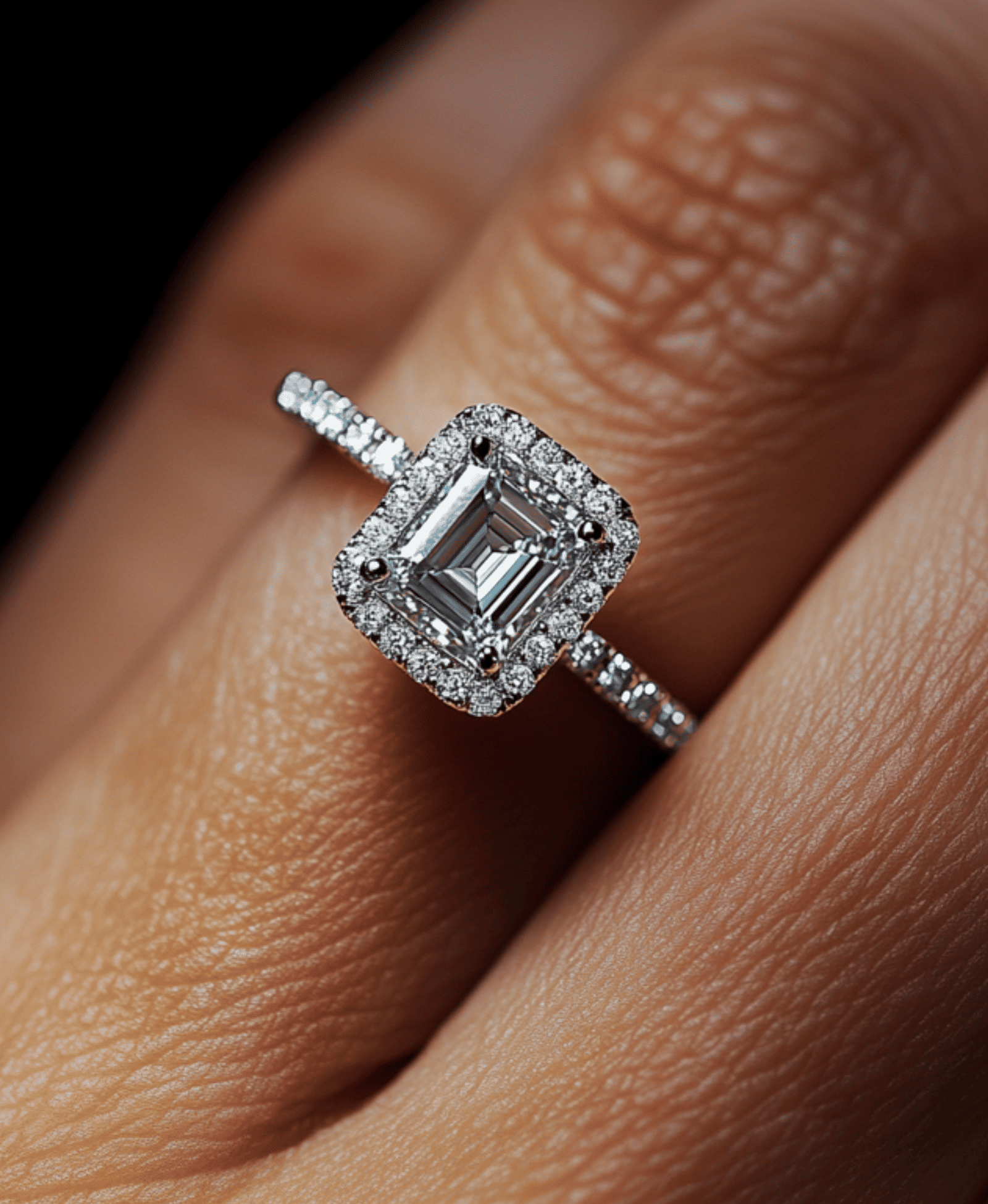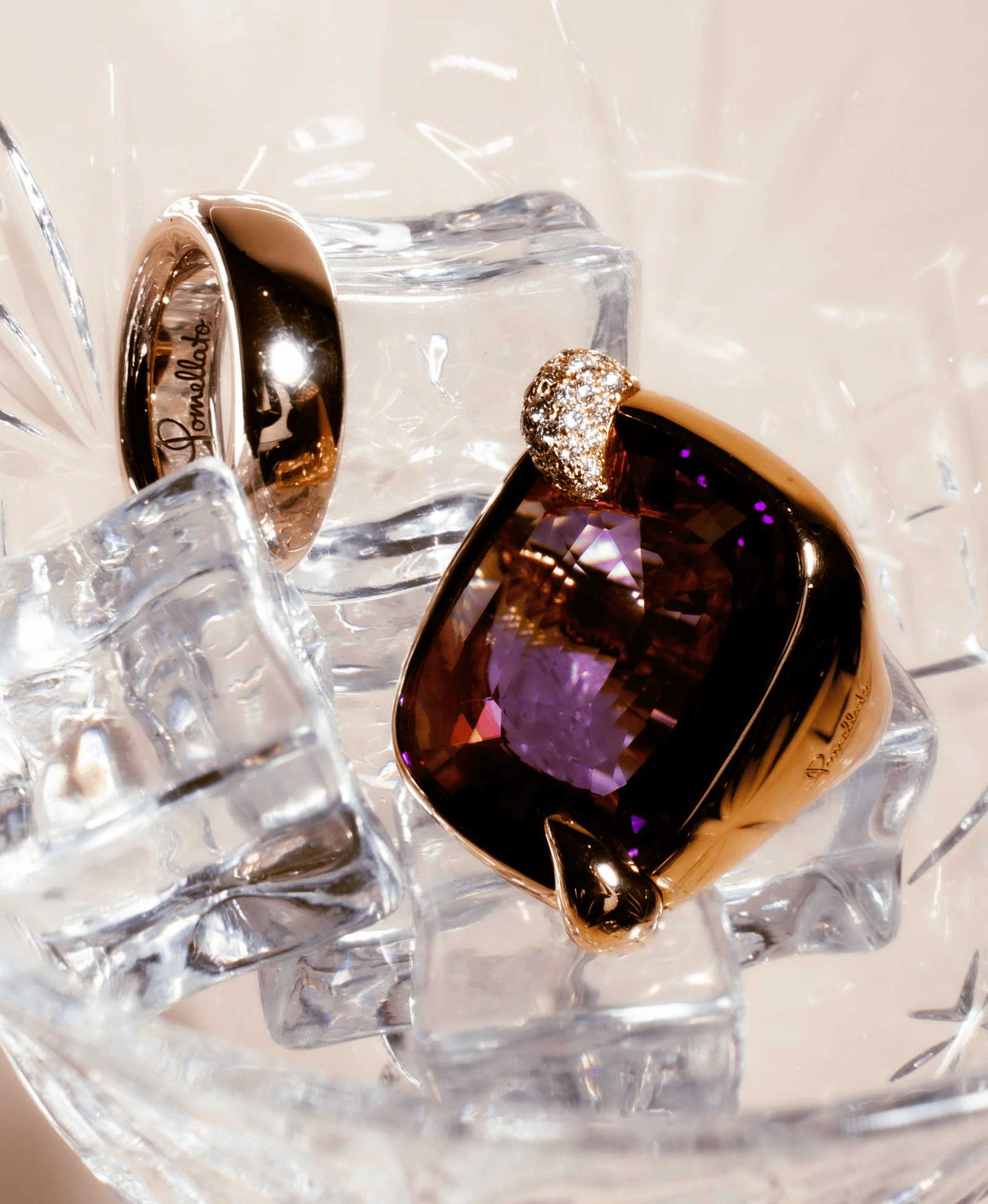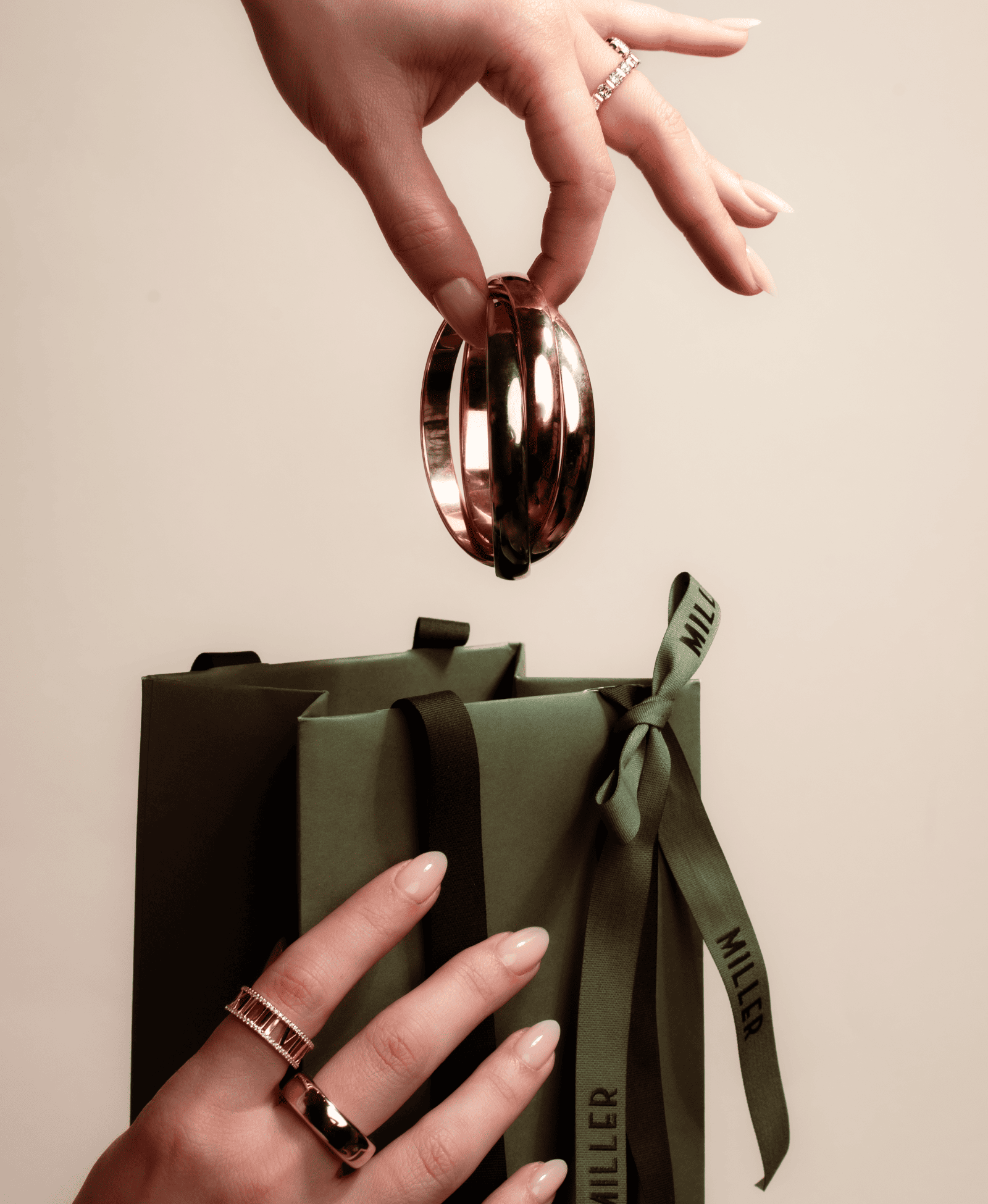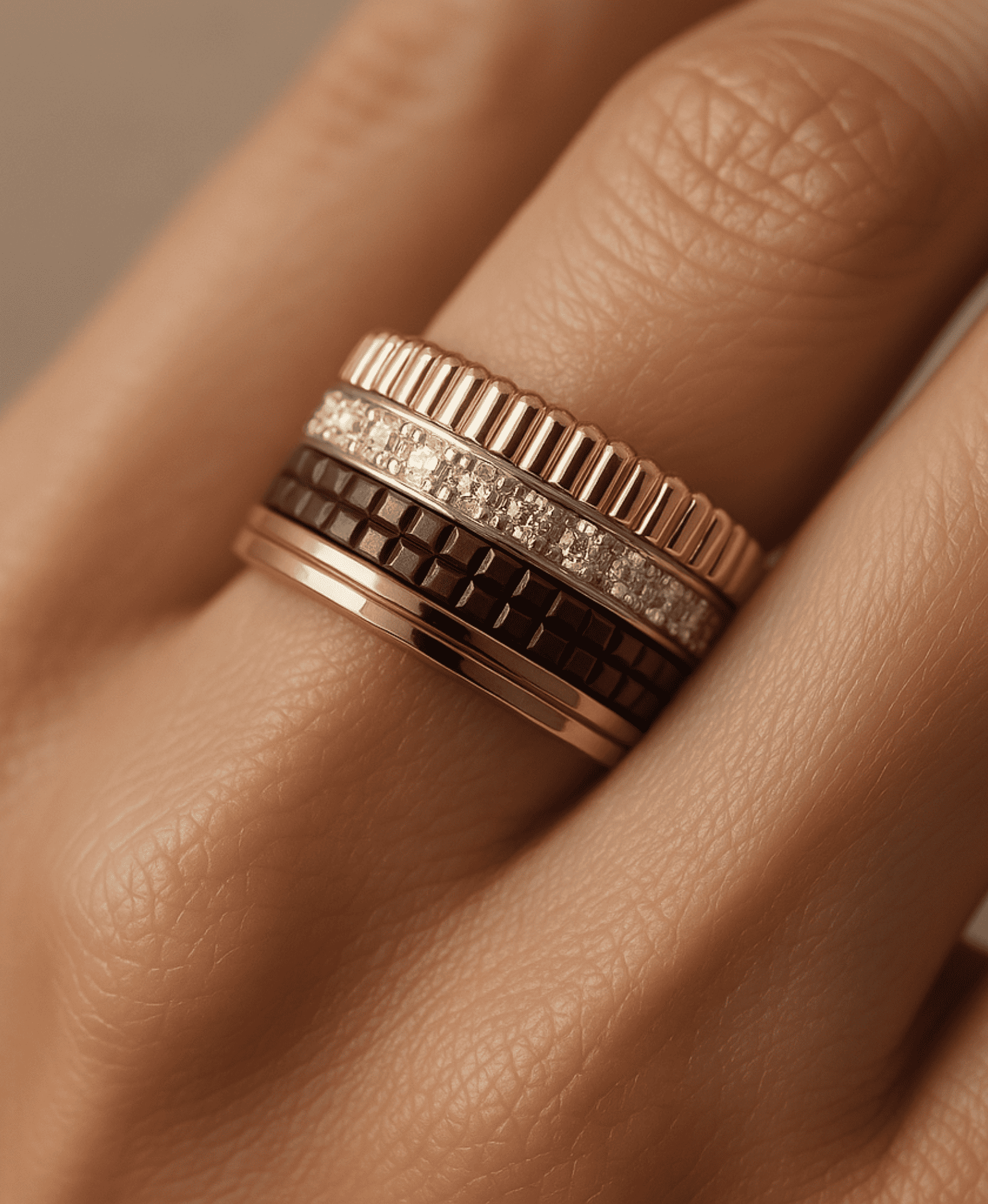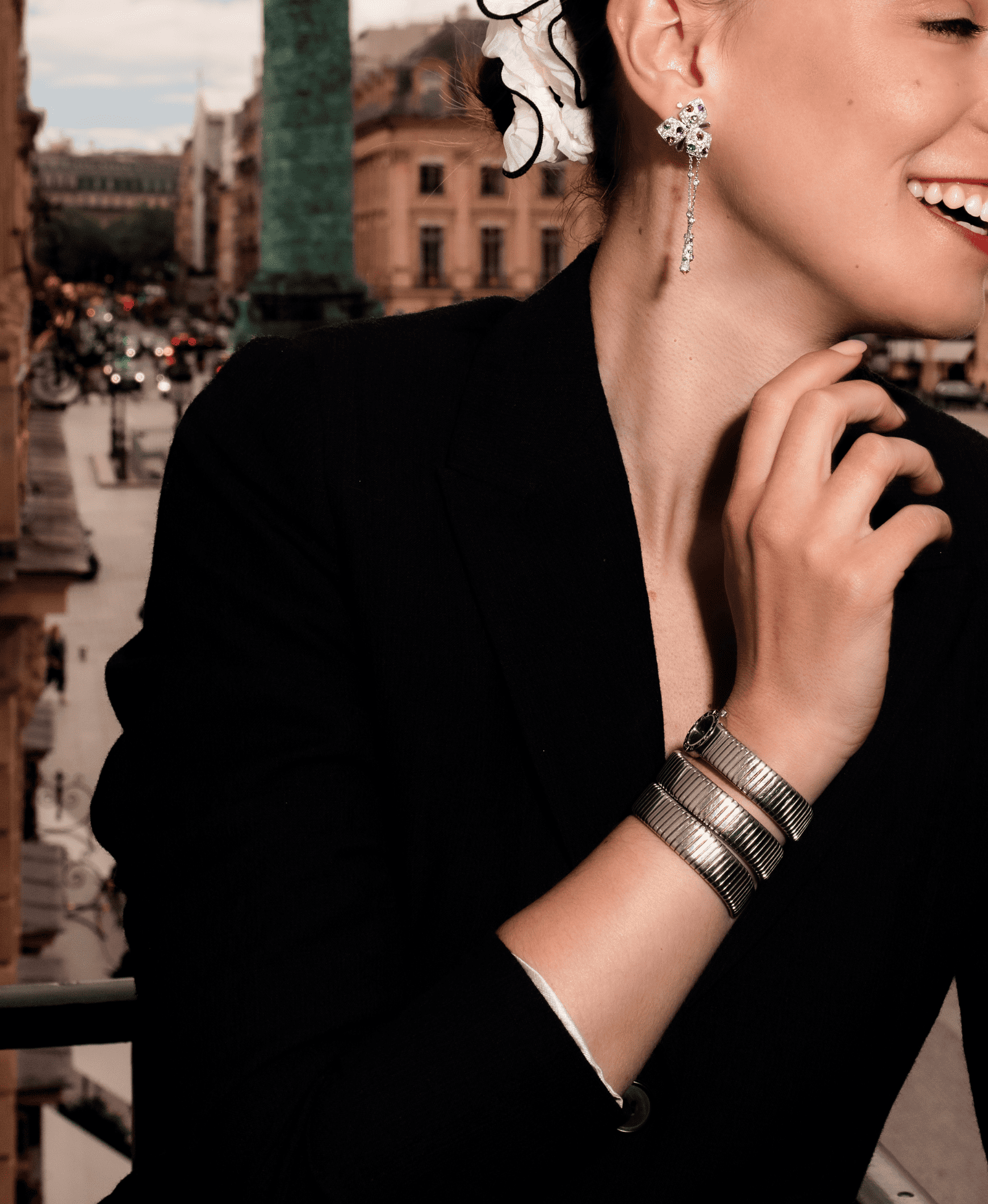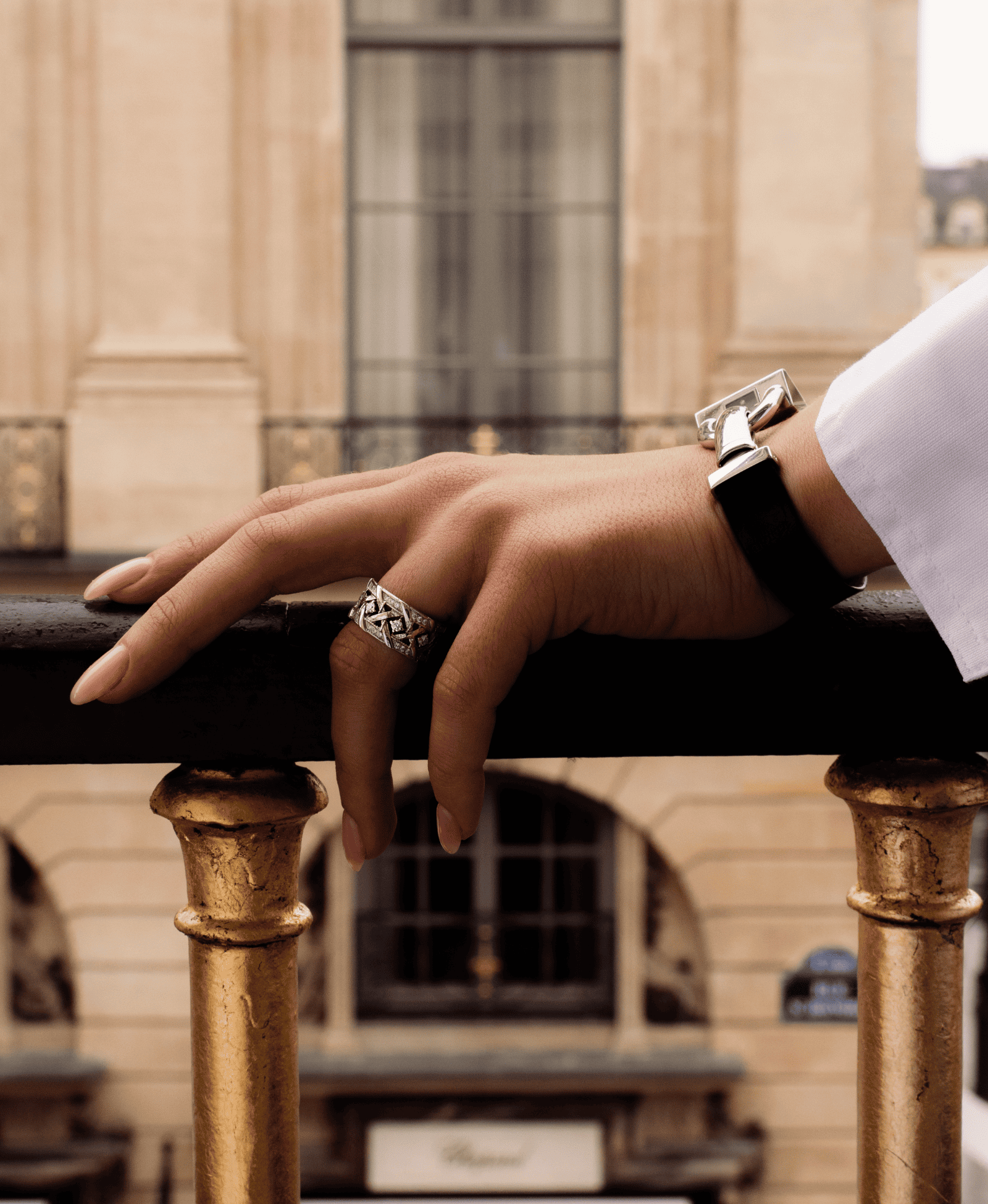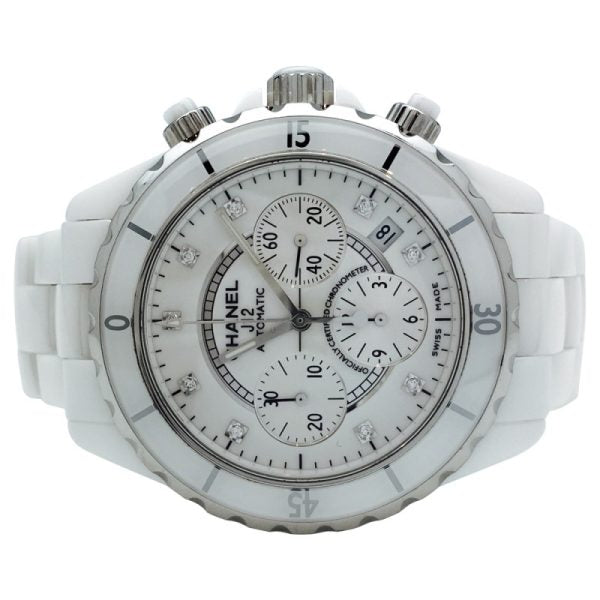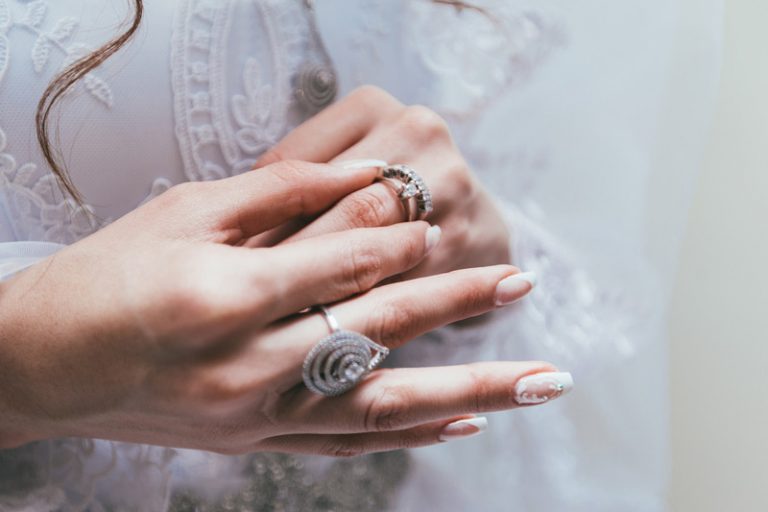
The 4Cs of Diamonds
The result of a collaboration between De Beers and the GIA (Gemological Institute of America) in 1940, the 4Cs of diamonds are still the reference scale for evaluating the quality of this precious stone today. Indeed, although diamonds are the "ultimate" of precious stones, not all diamonds are equal. Therefore, it is necessary to have universal criteria to determine the exceptional qualities of a diamond .
What are the 4Cs of diamonds?
The history of the 4 Cs begins at the beginning of the 20th century in the United States. This country where Robert M. Shipley , a former jeweler, decided to establish the GIA in an effort to professionalize the jewelry industry. Subsequently, the education provided to future jewelers by this institution essentially based on the 4 Cs established the popularity of these criteria for jewelers around the world who sell diamond jewelry.
The term 4C diamond comes from the first letters of the English name of the 4 reference criteria for determining the value of a diamond. Namely:
- Size (cut)
- Color (color)
- Purity (clarity)
- Weight (carat)
These evaluation criteria are mainly intended for white diamonds. Let us now see how all these elements are measured.
The 4Cs of diamonds: the cut
The cut of the diamond has a significant impact on its brilliance and shine. This is why the care with which this process was carried out greatly influences the value of the stone once cut. In fact, a diamond with perfectly symmetrical and aligned facets allows for better diffusion of light through the stone. Hence its sumptuous brilliance.
Unlike the other 4Cs of diamonds, the cut (and carat weight for that matter) of a diamond is not the work of nature and depends on human talent . A well-cut (in the ideal proportions) medium-purity diamond can appear more vibrant. The opposite is also true since a gem can be pure and colorless, but also dull and lifeless if it is not well-cut .
Also, believing that a diamond that has excellent clarity and a very beautiful color is automatically sparkling is a pure illusion. Concretely, if these two criteria give a greater added value to the diamond, it is truly its size that gives it its most beautiful brilliance . And encourages customers to buy this or that diamond jewel to celebrate a special occasion.
It is clear that the lower the carat number of a diamond, the more it shines. But it is also true that a large diamond is more expensive, and therefore less easy to sell. This is why many diamond dealers decide to cut the largest diamonds into several smaller stones in order to obtain an extraordinary shine and sell their stocks more quickly. And then it also allows you to obtain an excellent GIA diamond grading certificate.
How to judge the brilliance of a diamond?
In addition to the eye of an expert, there are devices that can determine the brilliance of a diamond, including the Ideal-Scope. Invented by Garry Holloway , this device is a brightly colored reflector with an observation hole and a lens. In other words, it allows light to be reflected onto the diamond. If red areas appear, this means that the gem has a high degree of brilliance. On the other hand, if the light reveals white areas, this means that it needs to be worked on, in particular by giving it a better cut.
In short, before buying a diamond, it is necessary to examine it carefully (with the Ideal-Scope for example) in order to determine its brilliance. And not to rely solely on the GIA certificate.
The 4 Cs of diamonds: color
First of all, it should be noted that diamonds are not always colorless. In fact, this precious stone comes in various natural colors such as pink and blue.
During its formation, the diamond absorbs gases which subsequently give it a certain tint . And it is depending on the quantity of gas absorbed that the diamond ends up with a more or less yellow tint.
Once cut and ready for sale, diamonds are graded according to their natural color. For international standardization, the GIA or Gemological Institute of America has established a color scale from D to Z. D represents an exceptional colorless "white" diamond . As for Z, it defines a slightly yellow stone color.
It should be noted, however, that lightly tinted diamonds should not be confused with yellow diamonds (which we saw above) and other fine stones with a natural yellow color such as sunstone or yellow beryl. In fact, these stones are classified on a completely different color scale than white diamonds.

Tips and tricks for buying a diamond according to its color
Do you want to invest in a beautiful flawless diamond with a color invisible to the naked eye? Only, you don't know how to go about it. Don't worry, we'll give you all the tips to help you get the most out of your investment.
- Since we are not all experts in detecting diamond hues, it is best to buy diamonds that are between G and J on the color scale. This will cost you less than a diamond that is between D and F.
- Also, know that the larger the diamond, the more light it reflects . Therefore, it is also easier to differentiate its color . So, if your budget allows it, opt for a diamond with a higher carat. Indeed, this allows you to better differentiate the color.
- A yellow gold jewel set with one or more diamonds reflects yellow light through the diamond. Thus, a diamond with a beautiful whiteness can still be tinged with yellow. So expect to have a colored diamond if it is mounted on a yellow gold jewel. If you want your diamond to be colorless, bet on jewelry made of white gold, rose gold, silver or platinum .
- If you want your diamond to be as brilliant as possible, choose it in a high weight and in a slightly tinted color. This way, your diamond will have more value, because its carat number is higher.
- Do not rely on the diamond grades established by most jewelry stores. It is always advisable to buy a diamond with a certificate that accurately indicates its color grade .
4C: diamond purity
Clarity is a quality of the diamond linked to the existence and visual appearance of certain elements that compose it. In other words, its inclusions and defects. It should also be noted that the prices of diamond jewelry vary according to this factor. Hence the interest in taking it into account if you are considering investing in a diamond ring, a diamond necklace, etc.
Diamond Clarity Terms
Of course, experts use specific terminology to describe internal features and surface defects. Here they are.
The internal characteristics of the diamond
When it comes to inclusions, here are some terms to remember.
- Cloud : a nebulous or milky area caused by fine inclusions of crystals.
- Feather : A crack caused by cleavage or fracture, usually white in color and feather-shaped.
- Cavity : presence of an angular opening on the surface of the diamond.
- Knot : A transparent crystal included in the diamond that extends to the surface of the diamond after it is cut.
- Pinpoint : A tiny crystal that looks like a small dot or flake under 10x magnification.
- Needle : A thin, long inclusion resembling a small rod under 10x magnification.
- Internal graining : inclusion due to internal structural deformation of the diamond or internal sign of irregular crystal growth.
- Bearding : inclusion similar to feathers which appears on the girdle (rounded) following the denoising of the diamond.
- Twinning wisp : The presence of a flat ribbon of small crystals caused by the distortion of the crystal during its growth. It usually takes the form of a ripple or a vaporous line.
Diamond surface defects
As for defects, the following concepts must be taken into account:
- Polish line : small parallel line left by polishing the diamond.
- External structural deformation lines (surface graining) : internal growth line that appears on the surface of the diamond.
- Natural or rough witness (natural) : presence of a small unpolished part on the surface of the diamond after cutting. In general, it occurs at the level of the girdle of the stone.
- Scratch : fine surface line present on the surface of the diamond.
- Nick : A slight notch or chip located near the girdle or edge of a facet.
- Pit : A tiny cavity found on the surface of a cut diamond.
- Chip : Presence of a superficial opening resulting from cutting or damage to the surface of the diamond.
- Abrasion : scratch or small mark that appears on the edge of the facets.
- Extra facet : one or more additional facets that do not fit into the standard cut of the diamond in question.

Diamond Clarity Scale
The Gemological Institute of America (GIA) has established the standard for diamond clarity classification. This international scale includes different codes that consist of letters and numbers. It goes without saying that to define the degree of purity or clarity of a diamond, 4C diamond experts observe the stone using a 10x magnification loupe.
Some inclusions are visible to the naked eye, in which case the diamond is called "pitted (P) or imperfect (I)". However, most often, inclusions are difficult to locate with the naked eye. Indeed, this precious stone has a very high light refraction index. Likewise, it has a great power of reflection.
So, find out below about the degrees of diamond purity.
First, there is the rarest of diamond finds: FL (Flawless) . In fact, there are no internal inclusions or surface defects of any kind. And this is the case even when using a qualified loupe with a 10x magnification.
On the other hand, we find IF (Internally Flawless) which means "internally pure" or "pure under the magnifying glass". In this case, internal inclusions are non-existent. On the other hand, imperfections are still visible under the magnifying glass (10x magnification).
Next come the VVS1-VVS2 (Very Very Small inclusions). We thus note the presence of very very small inclusions, but difficult to perceive under a magnifying glass.
After that, we can mention VS1-VS2 (Very Small inclusions) which are characterized by the presence of minor inclusions (visible under a 10x magnification loupe) in the diamond. This precious stone is nevertheless of high quality.
As for SI1-SI2-SI3 (Small Inclusions) , these small internal inclusions and external imperfections are easily spotted with a magnifying glass. However, they are generally imperceptible to the naked eye.
Finally, there are the I1-I2-I3 (Imperfect) which are obviously distinguished by the apparent visibility of inclusions and imperfections to the naked eye. These also slightly affect the brilliance of the diamond.
Choosing your diamond based on its purity
Of course, buying a diamond depends primarily on your needs, preferences and budget. In most cases, you will most likely come across diamonds with small inclusions and imperfections. Also, you should know that the fewer inclusions a diamond has and the less visible they are, the higher its clarity level.
Additionally, to get the most out of your budget, look for a diamond that is “eye clean.” In other words, a diamond that is graded VS1 or higher and that has inclusions and imperfections that are only visible under a 10x loupe. You should also make sure that the seller provides you with a GIA-approved certificate that guarantees the quality of the diamond upon purchase.
4C of diamond: weight
The weight of a diamond is measured by the carat, a unit of measurement that is equivalent to 200 milligrams . According to the 4C diamonds, the weight of a diamond depends directly on its size. In other words, like any precious object, its size contributes greatly to its value. This is why, for equal quality, the weight of a given diamond can increase its value, compared to another stone.
Carat: definition and origin
You are probably wondering how a carat is defined. It couldn't be simpler! A carat is a unit of measurement used in gemology to define the weight of precious stones, including diamonds. In jewelry, a carat corresponds to 0.20 g (or 200 mg). For the record, it was in 1907 that experts defined the metric carat . And this was during the 4th General Conference on Weights and Measures (CGPM).
As for the origin of the word, it comes from the term "Qirat" or "kuara" which refers to carobs . Indeed, the seeds of the carob tree (a tree found in Mediterranean regions) have a very regular weight. As a result, they have long served as a mass standard during Antiquity to weigh gems.
Carat weight of a diamond: how to evaluate it?
Obviously, it is perfectly possible to estimate the weight of a diamond based on its size (in mm). Otherwise, it is sufficient to measure its mass directly using a specific scale (carat scale). However, for an accurate measurement, it is advisable to weigh it in an enclosed place away from:
- air currents
- vibes
- heat sources
Note that the stone must be clean at the time of weighing.
The weight of the diamond expressed in points
Because the weight of a diamond is measured to the nearest hundredth, the carat is divided into 100 points . Especially since most of the time, jewelers work with diamonds of less than one carat. Similarly, individuals generally opt for small precious stones. In fact, you are probably aware that a 1 carat gem is relatively large and expensive. Hence the interest in small diamonds.
One point is equal to one hundredth of a carat . Also, a 60-point diamond corresponds to a 0.6-carat diamond. On the other hand, for 25 points, we are talking more about 1/4 of a carat.
Good to know : be aware that the size and regularity of the diamond also allow you to assess its weight. To do this, it is important to take the dimensions of the stone.
Our advice for choosing a diamond according to its weight
To find the ideal stone to mount on your diamond jewelry, it is important to take into account the 4 Cs, including the carat. However, it is essential to consider the size and the carat together. Indeed, a poor quality of cut can handicap a diamond even if it has a greater carat weight. On the contrary, a smaller diamond, but with an excellent quality of cut can appear significantly larger.
Of course, it is better to opt for a diamond weighing less than one carat (1/4 carat, half carat, etc.). This will certainly give you the opportunity to save money while still enjoying yourself.
4C Diamond: How to Choose Your Jewelry
Depending on your tastes and budget, the 4Cs will be of great help to you in purchasing a diamond . Indeed, these criteria are the best way to effectively estimate the price and quality of a diamond. Moreover, there is nothing more suitable to enhance your look and outfit at a social event or a special occasion than a diamond jewel. Diamond necklace, diamond-set ring, diamond earrings , etc., there are some for both men and women. And for more authenticity, go to the experts in antique jewelry.
It is also important to know that the big names in fine jewelry take the 4C diamonds into account when choosing the diamonds they use for their designs. Luxury jewelry by De Beers, Cartier, Chopard, Poiray, etc. speaks for itself.

